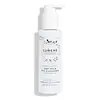What's inside
What's inside
 Key Ingredients
Key Ingredients

 Benefits
Benefits

 Concerns
Concerns

 Ingredients Side-by-side
Ingredients Side-by-side

Water
Skin ConditioningGlycerin
HumectantLauryl Hydroxysultaine
CleansingSodium Methyl Cocoyl Taurate
CleansingSodium Cocoyl Alaninate
Acrylates/C10-30 Alkyl Acrylate Crosspolymer
Emulsion StabilisingAvena Sativa Kernel Extract
AbrasiveAvena Sativa Kernel Flour
AbrasiveHydrolyzed Hyaluronic Acid
HumectantCoffea Arabica Seed Extract
MaskingPanthenol
Skin ConditioningQuillaja Saponaria Bark Extract
CleansingAdansonia Digitata Seed Oil
EmollientCyanocobalamin
Skin ConditioningCaprylyl Glycol
EmollientCoco-Glucoside
CleansingGlyceryl Caprylate
EmollientSodium Cocoyl Isethionate
CleansingCitric Acid
BufferingButylene Glycol
HumectantStyrene/Acrylates Copolymer
1,2-Hexanediol
Skin ConditioningDisodium EDTA
Parfum
MaskingWater, Glycerin, Lauryl Hydroxysultaine, Sodium Methyl Cocoyl Taurate, Sodium Cocoyl Alaninate, Acrylates/C10-30 Alkyl Acrylate Crosspolymer, Avena Sativa Kernel Extract, Avena Sativa Kernel Flour, Hydrolyzed Hyaluronic Acid, Coffea Arabica Seed Extract, Panthenol, Quillaja Saponaria Bark Extract, Adansonia Digitata Seed Oil, Cyanocobalamin, Caprylyl Glycol, Coco-Glucoside, Glyceryl Caprylate, Sodium Cocoyl Isethionate, Citric Acid, Butylene Glycol, Styrene/Acrylates Copolymer, 1,2-Hexanediol, Disodium EDTA, Parfum
Water
Skin ConditioningC15-19 Alkane
SolventOleyl Erucate
EmollientPropanediol
SolventGlycerin
HumectantCaprylic/Capric Glycerides
EmollientBetula Alba Juice
AstringentCetyl Palmitate
EmollientPrunus Amygdalus Dulcis Oil
Skin ConditioningVaccinium Myrtillus Fruit Juice
Skin ConditioningSodium Stearoyl Glutamate
CleansingCaprylyl/Capryl Glucoside
CleansingAvena Sativa Kernel Oil
Skin ConditioningAvena Sativa Kernel Flour
AbrasiveCanola Oil
EmollientSaccharide Isomerate
HumectantSclerotium Gum
Emulsion StabilisingPhenoxyethanol
PreservativeMicrocrystalline Cellulose
AbsorbentCitric Acid
BufferingSodium Gluconate
Skin ConditioningXylitol
HumectantCellulose Gum
Emulsion StabilisingTocopherol
AntioxidantHelianthus Annuus Seed Oil
EmollientXanthan Gum
EmulsifyingEthylhexylglycerin
Skin ConditioningSodium Citrate
BufferingDecyl Alcohol
EmollientRosmarinus Officinalis Leaf Extract
AntimicrobialSodium Chloride
MaskingWater, C15-19 Alkane, Oleyl Erucate, Propanediol, Glycerin, Caprylic/Capric Glycerides, Betula Alba Juice, Cetyl Palmitate, Prunus Amygdalus Dulcis Oil, Vaccinium Myrtillus Fruit Juice, Sodium Stearoyl Glutamate, Caprylyl/Capryl Glucoside, Avena Sativa Kernel Oil, Avena Sativa Kernel Flour, Canola Oil, Saccharide Isomerate, Sclerotium Gum, Phenoxyethanol, Microcrystalline Cellulose, Citric Acid, Sodium Gluconate, Xylitol, Cellulose Gum, Tocopherol, Helianthus Annuus Seed Oil, Xanthan Gum, Ethylhexylglycerin, Sodium Citrate, Decyl Alcohol, Rosmarinus Officinalis Leaf Extract, Sodium Chloride
 Reviews
Reviews

Ingredients Explained
These ingredients are found in both products.
Ingredients higher up in an ingredient list are typically present in a larger amount.
Oatmeal flour is created by grinding down the kernels of oats. Oatmeal helps sooth, hydrate, and protect the skin.
Oatmeal kernel flour has abrasive, or exfoliating, properties.
Learn all about the skin benefits of colloidal oatmeal here.
Learn more about Avena Sativa Kernel FlourCitric Acid is an alpha hydroxy acid (AHA) naturally found in citrus fruits like oranges, lemons, and limes.
Like other AHAs, citric acid can exfoliate skin by breaking down the bonds that hold dead skin cells together. This helps reveal smoother and brighter skin underneath.
However, this exfoliating effect only happens at high concentrations (20%) which can be hard to find in cosmetic products.
Due to this, citric acid is usually included in small amounts as a pH adjuster. This helps keep products slightly more acidic and compatible with skin's natural pH.
In skincare formulas, citric acid can:
While it can provide some skin benefits, research shows lactic acid and glycolic acid are generally more effective and less irritating exfoliants.
Most citric acid used in skincare today is made by fermenting sugars (usually from molasses). This synthetic version is identical to the natural citrus form but easier to stabilize and use in formulations.
Read more about some other popular AHA's here:
Learn more about Citric AcidGlycerin is already naturally found in your skin. It helps moisturize and protect your skin.
A study from 2016 found glycerin to be more effective as a humectant than AHAs and hyaluronic acid.
As a humectant, it helps the skin stay hydrated by pulling moisture to your skin. The low molecular weight of glycerin allows it to pull moisture into the deeper layers of your skin.
Hydrated skin improves your skin barrier; Your skin barrier helps protect against irritants and bacteria.
Glycerin has also been found to have antimicrobial and antiviral properties. Due to these properties, glycerin is often used in wound and burn treatments.
In cosmetics, glycerin is usually derived from plants such as soybean or palm. However, it can also be sourced from animals, such as tallow or animal fat.
This ingredient is organic, colorless, odorless, and non-toxic.
Glycerin is the name for this ingredient in American English. British English uses Glycerol/Glycerine.
Learn more about GlycerinWater. It's the most common cosmetic ingredient of all. You'll usually see it at the top of ingredient lists, meaning that it makes up the largest part of the product.
So why is it so popular? Water most often acts as a solvent - this means that it helps dissolve other ingredients into the formulation.
You'll also recognize water as that liquid we all need to stay alive. If you see this, drink a glass of water. Stay hydrated!
Learn more about Water